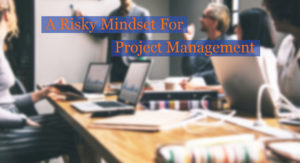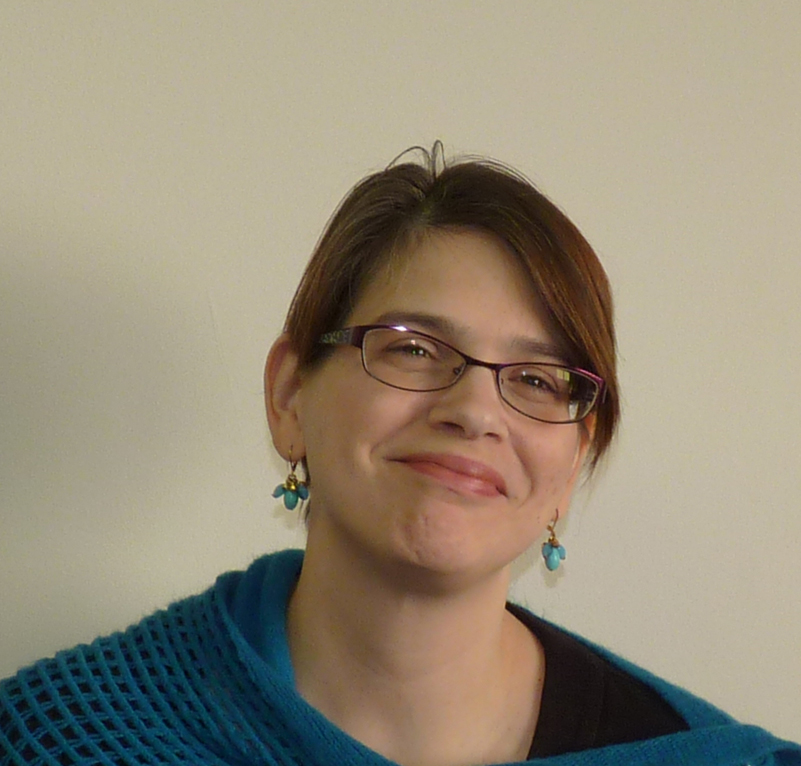A Risky Mindset For Project Management

Written By Amy Townson:
When I was born, my parents drove home from the hospital with me just lying on the back seat. No seat belt, no car seat, no protective bubble wrap to make sure I got home safely. I swear, they were great parents – they just took the same types of risks that everyone else took back in the day. Imagine what would happen to new parents today if they took the same approach to risks that parents in earlier days took. I can’t see a good ending for them, and rightfully so. Our society’s awareness of risks and tolerance for risks has changed in the past several decades. Parents have adapted.
Compare this to your organization or your client. Has your organization’s awareness of risks changed over the years? Has their tolerance for risk changed? Have you adapted your risk management strategies to suit?
Risk Management in a Perfect World
We all know what risks are, right?
The Project Management Institute (PMI) defines risks as uncertain events that can have an impact on your project (PMBOK Guide, 6th edition, 2017). Threats are risks which can have a negative impact while opportunities can have a positive impact on your project. Risk management, then, is simply the process of identifying and managing risks and opportunities.
In typical waterfall project management (plan the project, work the plan), risk management is a series of formal steps in the process. Risks are identified early in the process and continue to be identified as an ongoing task. Strategies to deal with the risks are developed and put into place.
These projects will have a risk register, where risks are prioritized based on probability and impact. Probability refers to how likely the risk is to happen, and impact refers to the impact the risk will have on the project if it happens. So, a risk that has a huge probability, but a medium impact will have a higher priority than a risk with a massive impact, but almost no probability.
On Agile projects, risk management is addressed as part of regular operations and will use many of the same tools, such as the risk register and prioritization. Since Agile projects focus on short, timeboxed sprints, the risk management process is more continuous and iterative (SBOK Guide, 3rd edition, 2016). Identification of risks occurs during sprint planning sessions for risks which may impact the upcoming sprint.
Is This Your Reality?
All too often, projects seem to take risk management as a fixed process. Even on Agile projects, the only risks identified are frequently day-to-day barriers or risks specific to a two-week timebox. But doesn’t risk change throughout the project? Do your organization’s attitudes toward risks change?
New parents know that “baby-proofing” their home is a never-ending process. Risks at home change dramatically as that baby grows into a toddler, and parents adjust their process to fit. Similarly, first-time parents tend to follow every safety guideline they read, whereas second- and third-time parents know where and how they can flex the guidelines to suit their family. Their tolerance for risks changes as they become more experienced.
What Should You Do Instead?
Adopt a Risk Mindset – Risks shouldn’t be just another project document or just the day-to-day barriers. Every team member should think about the risks throughout the project. Embrace the process and encourage identification of risks early and often for the duration. Constantly scan the environment for risks so that this becomes second nature to you.
Gauge Your Organization – What is their risk appetite in general? For your project specifically? How does the risk tolerance change throughout time? Some organizations are risk-averse during tax season or year-end closeout, for example. Does the audience or final user or your project impact risk tolerance? If you are working on a public-facing system that thousands of customers will use daily, risk tolerance is likely a bit different than it would be for an internal system with existing procedural workarounds.
Tailor Risk Management to Your Project’s Needs – Some projects are so large and complex, that they need a rigid process for identifying and managing risks to ensure risks don’t get lost in the crowd. That level of documentation and process is probably not appropriate for a smaller project with team members who communicate on a daily basis. Like anything else in project management, risk management can become process-driven and strangle the project. Focus on the outcomes needed for risk management, and make sure the process you use for any given project meets those outcomes.
Reframe the Risks – Risks aren’t bad or good. They just are. How you (or the project team, or the organization) respond to them is what matters. Do your threats have corresponding opportunities you can identify? Many risks have both a positive and a negative counterpoint. Be sure you understand both the threats and the opportunities.
Increase Awareness – Communicate and make sure your sponsor and governance team members are aware of the risk. More than likely, they are your decision makers. You need to make sure they are making a fully informed decision. Engaging in risky project behaviors is like gambling – sometimes it pays off and sometimes it doesn’t. Can the organization afford for this project to go wrong? Are they willing to pay if it goes wrong?
Why Does This Really Matter?
You already know where your project is trying to go and you’ve got some strategy (maybe a formal waterfall plan, maybe a prioritized product backlog) to get there. Risk management allows you to pursue that future. If you don’t look at the things that can trip you up or help you get there faster, you’re leaving an awful lot to chance.
If you only look at these things once, then you’re potentially missing out changes that may impact the project. Be aware of the changing risks and the ebb and flow of the risk appetite within your organization. Otherwise, you’ll be a bit like the parent whose toddler is now an out-of-control teenager. Do you still focus on outlet covers, or do you focus on the risks that are pertinent now?
References
Project Management Institute. (2017). A Guide to the Project Management Body of Knowledge (PMBOK Guide). (6th ed.) Newtown Square, PA: Project Management Institute.
SCRUMstudy. (2016). A Guide to the Scrum Body of Knowledge (SBOK Guide). (3rd ed.) Avondale, AZ: SCRUMstudy.
Amy Townson – Project Manager

Ms. Townson is a certified project manager with almost 20 years of experience and expertise in the health and human services industry, transportation, state government sector, contract management, and project management techniques. She has strong facilitation skills with the ability to tailor messages to fit the audience’s experience level and role. Ms. Townson is a skilled leader of in-person, virtual, and combination teams.
 Tap to email
Tap to email
